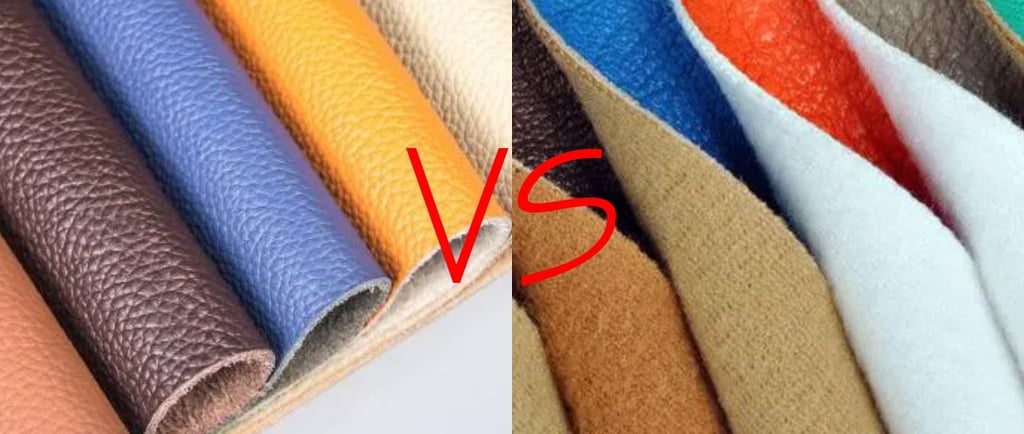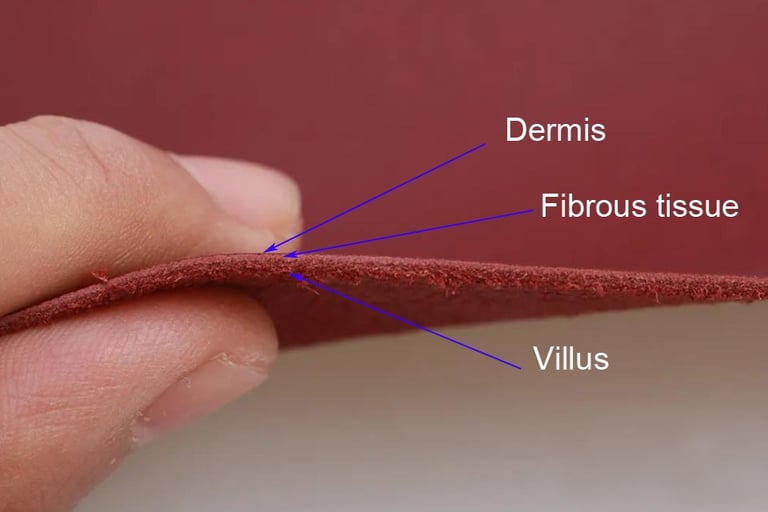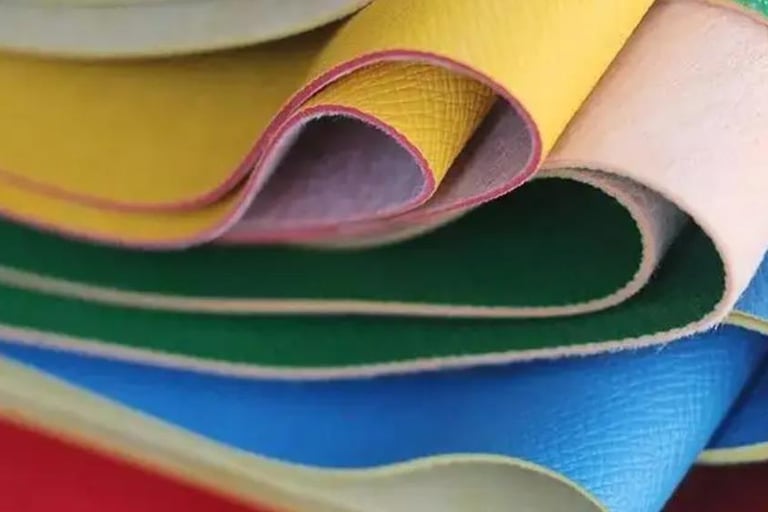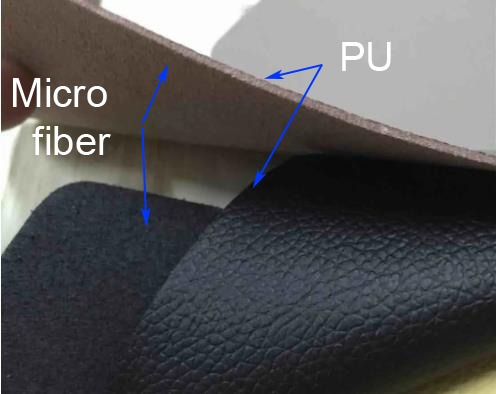Genuine Leather vs. Faux Leather for Furniture: Types and Differences
This article is about the types and difference between genuine leather and faux leather, aiming to help you to clarify the right type of leather that you can choose for your custom furniture.
EXPERIENCE SHARING
admin
11/18/20255 min read


When furnishing a home—whether picking a statement sofa or a cozy armchair—one of the biggest choices you’ll face is leather type. Genuine leather and faux leather each have their own strengths, textures, and use cases, and understanding what sets them apart can save you from buyer’s remorse later. Let’s break down their common types first, then dive into how they differ in everyday use.
First: Types of Genuine Leather for Furniture
Genuine leather (made from real animal hide, usually cowhide for furniture due to its thickness and durability) isn’t a one-size-fits-all term. It’s split into grades based on how much the hide is processed, which directly affects its look, feel, and lifespan.
Full-Grain LeatherThis is the highest-quality genuine leather you’ll find. It uses the entire top layer of the hide—no sanding, buffing, or heavy processing to cover flaws. That means it keeps the hide’s natural grain, scars, or subtle marks (like stretch marks from the animal’s life), which adds character. Full-grain leather is also the most durable: it develops a “patina” over time (a soft, warm sheen from use) and resists wear. It’s pricey, though, so you’ll mostly see it on high-end sofas or accent chairs.
Top-Grain LeatherThe second-most common type for furniture, top-grain leather is made by sanding off the top layer of the hide to remove blemishes. This makes it smoother and more uniform in appearance than full-grain, but it’s slightly less durable (since the tough top layer is gone). Most furniture brands treat it with a protective coating to resist stains, which makes it a practical choice for busy homes (think families with kids or pets). It still feels like real leather, just with a more consistent look.
Corrected-Grain LeatherIf you’re looking for genuine leather on a budget, corrected-grain is likely what you’ll find. It’s made from lower-quality hides with more flaws, so manufacturers sand the surface heavily and then print a fake grain pattern on top to make it look uniform. It has a protective coating too, but it feels less “natural” than full-grain or top-grain—more like a smooth, slightly rigid material. It’s affordable, but it won’t develop a patina and may start to peel or fade if exposed to too much sunlight over time.
Next: Types of Faux Leather for Furniture




Faux leather (also called artificial leather or vegan leather) is man-made, usually from plastic or synthetic fibers. It’s become popular for its lower cost, animal-free appeal, and easy maintenance. Here are the three main types used in furniture:
PVC Leather (Polyvinyl Chloride)The cheapest and most common faux leather, PVC is made by coating a fabric backing (like polyester) with PVC plastic. It’s stiff, shiny, and has a distinct “plastic” smell when new. It’s easy to wipe clean (just use a damp cloth), but it’s not breathable—sitting on a PVC sofa in summer can make you sweat. It also tends to crack or peel after 3-5 years, especially if it’s in a sunny room (PVC breaks down with UV exposure). It’s a good pick for temporary furniture (like a dorm room sofa) but not for long-term use.
Microfiber Leather (Microsuede Leather)The most premium faux leather, microfiber leather is made from ultra-fine polyester fibers woven into a dense fabric, then coated with a polyurethane layer. It feels very close to genuine leather—soft, textured, and breathable—and it’s surprisingly durable (some high-quality microfiber sofas last 8-10 years). It resists stains well (many are treated with water-repellent coatings) and doesn’t crack like PVC or PU. It’s more expensive than other faux leathers, but it’s a great vegan alternative to top-grain leather. You’ll often find it in car seats too, thanks to its durability.




Key Differences Between Genuine and Faux Leather
Once you know the types, the differences between genuine and faux leather boil down to practicality, feel, and long-term value:
Material & Origin: Genuine leather comes from animal hides (cow, sheep, or goat, mostly), so it’s a natural product. Faux leather is synthetic—made from plastics (PVC/PU) or fibers (microfiber)—so it’s vegan-friendly.
Feel & Texture: Genuine leather (especially full-grain) has a warm, organic feel; it’s soft but has subtle texture from the hide’s natural grain. Faux leather is often smoother or more uniform—PVC is stiff, PU is softer, but neither has that “lived-in” texture that genuine leather develops.
Breathability: Genuine leather is porous, so it lets air flow through—you won’t stick to it in hot weather. Most faux leathers (PVC and basic PU) are non-porous, so they trap heat and moisture. Only high-end microfiber leather comes close to matching genuine leather’s breathability.
Durability & Longevity: Full-grain genuine leather is the longest-lasting—with proper care, it can last 20+ years. Faux leather tops out at 10 years (for microfiber) or 3-5 years (for PVC/PU). Faux leather also tends to peel or crack over time, while genuine leather ages gracefully with a patina.
Price: Genuine leather is more expensive—full-grain sofas can cost $3,000+. Faux leather is cheaper: PVC sofas start at $500, PU at $800, and microfiber at $1,200.
Maintenance: Faux leather is easier to clean—just wipe spills with a damp cloth (avoid harsh chemicals, which can damage the coating). Genuine leather needs more care: you’ll need to dust it regularly, condition it every 6-12 months to keep it soft, and blot spills quickly to avoid stains (water can leave marks if not dried properly).
Final Thought
Choosing between genuine and faux leather isn’t about “better” or “worse”—it’s about what fits your lifestyle and budget. If you want a long-lasting, high-quality piece that ages beautifully and don’t mind the cost, go for full-grain or top-grain genuine leather. If you’re on a budget, need something vegan, or want low-maintenance furniture for a high-traffic space, microfiber or PU faux leather is a solid pick. Either way, knowing the types and differences helps you pick a piece that’ll look great in your home for years.
